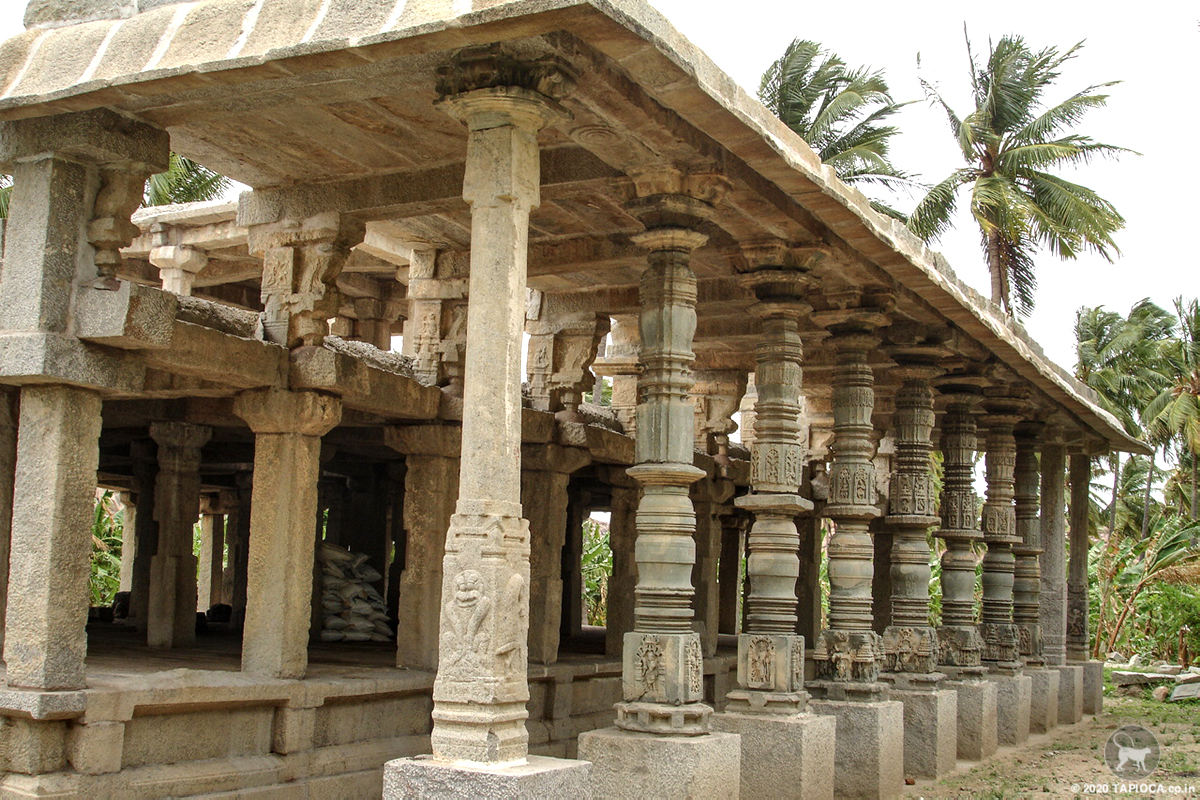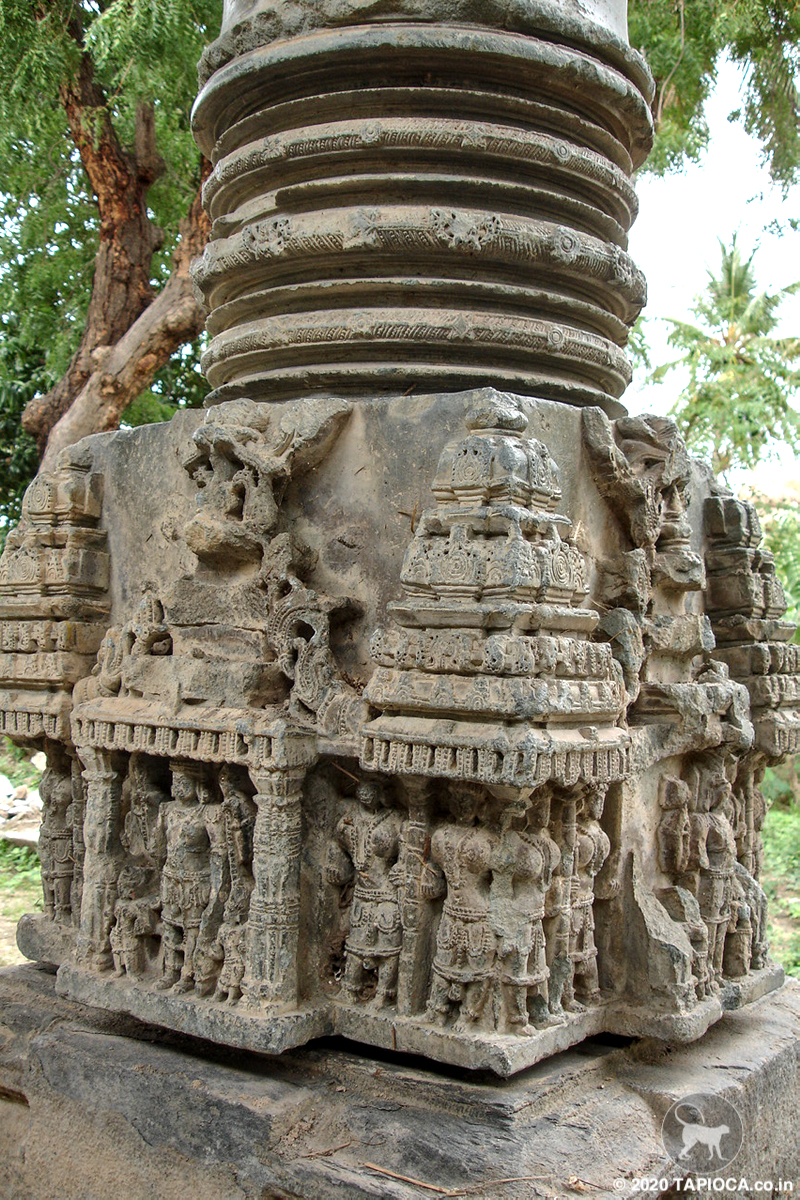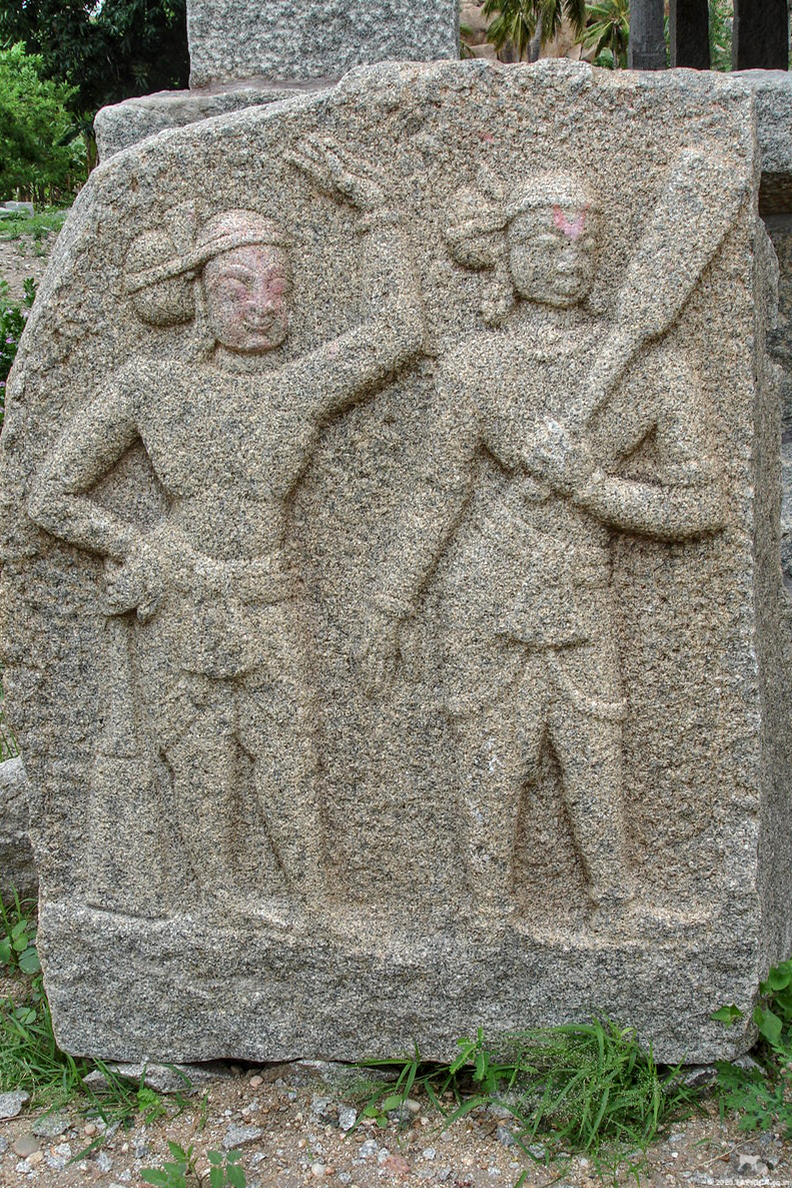Hachappa Mantapa
From the main road, this pavilion sits hidden in thick banana plantation with a palm lined trail leading it.

The pavilion with lathe carved pillars
Located on the Anegondi side, just next to the coracle ferry point
T
his reconstructed pavilion is the first major stop once you have crossed to Anegondi area from the Talarigata ferry point near Vittala Temple. The highlight is a two storied pavilion made with sculptured pillars. Tall circular pillars made using some kind of lathe is of pre Vijayanagara origin.The bases of these pillars are decorated with tiny but delicate carvings of gods and goddesses. This is the typical architectural style of the Hoysalas, the empire that preceded the Vijayanagara kingdom. Though in ruined state, the carvings are finer and detailed than you've seen in the typical Vijayanagara architecture.
The pavilion is peculiar for is its atrium like opening in the middle. The parapet around the atrium is decorated with an array of carved panels, mostly depicting court scenes and life of the time. The ceiling spots some traces of paintings. The pavilion is without any wall and array of stone artifacts recovered from the river are also on display.
How to reach
Take the coracle/barrage ferry to Anegondi from the Vittala Temple side.
The short but panting climb from the ferry point brings you to a fork. The right branch heads straight into the Anegondi village square located about a kilometer northeast. The rather straight looking left road bypasses the Anegondi village and intersects a main road at about a kilometer away. Take this bypass path if you are straight heading to places like the hilltop Hanuman Temple or Pampa Sarovar.
The road first mentioned (the right fork) passes along the Hachappa Mantapa. Take this path and about 100 meters forward, you can see this place on your right tucked in a banana and coconut plantation.
There is no entrance fee. You may stop by for a few minutes quick tour before proceeding north into the village centre of Anegondi. Do this as part of the Route 5 Hampi Itinerary.

Pillar-carving-details , Hachhappa Mantapa
Pillar-carving-details , Hachhappa Mantapa

Pillar Base
A Pillar base at Hachappa Mantapa, on the way to Anegundi village from Hampi

Atrium
See the details on the panels around the atrium walls

Boatmen Image, Hachappa Mantapa
Experience same way how boatmen ferried people across the river crossing at Hampi during its prime era.
